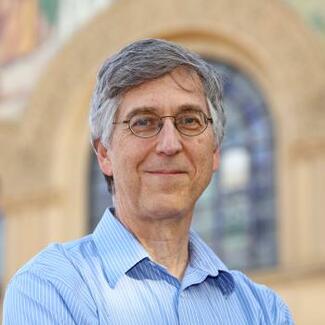
Mark Horowitz featured in Q&A with National Academies
Researchers and tech companies are racing to develop quantum computers that can solve hard scientific problems that conventional computers can’t. Mark Horowitz answers questions about quantum computing and progress in the field.
Professor and Chair Mark Horowitz recently chatted with National Academies' Sara Frueh on quantum computing. Mark is the Fortinet Founders Chair of the Department of Electrical Engineering, Yahoo! Founders Professor in the School of Engineering and Professor of Computer Science. In 2019, Mark chaired a National Academies report on quantum computing.
Excerpted from 'A Bit (or Qubit) About Quantum Computing: Q&A with Mark Horowitz,’ National Academies, written by Sara Frueh.
For people who are new to this topic, what is quantum computing? What makes a quantum computer different from the conventional kind?
Horowitz: To answer that, you first need to ask, what is a computer? A computer is a device that stores information as a set of ones and zeros. It’s called a binary bit, and those binary ones and zeros can be put together to represent numbers, colors on the screen, words. So, we represent everything in terms of these bits.
The computer can do only a few operations on these bits — it can add them, and do logical operations between the bits — but we figured out how to convert those kinds of operations, through the use of programs, to do amazing things. It’s the reason your cell phone works. It’s the reason Zoom works and you can see people remotely. We get really nice graphics and games. So, all of that is done through conventional computers that use binary representations of ones and zeros.
A quantum computer is also a kind of computing device, but instead of using a bit — a one or zero — it uses this thing called a qubit, or quantum bit. And the quantum bit has some additional properties that conventional computing bits don’t have.
I think an analogy might be useful here. A bit is like a coin sitting on a table. Let’s say heads represents a one, and tails represents a zero. When you look at a bit, it will be either a one or a zero. A qubit is more like a pool ball with a number on it. When the number is facing up, the qubit is a one, and when the number is facing the table, it is a zero. But since it is a ball, the number could point to the side. In this position, the qubit will be in a “superposition” of states — it can be both one and zero simultaneously.
The fact that qubits can be both zero and one at the same time — and another quantum property called entanglement — allows qubits to do some operations that are hard for conventional computers to do. And there are certain tasks that we know quantum computers can do much more quickly than regular computers. That is the good news. The bad news is that building a machine that can control ball-like qubits is much harder than building a machine that needs to store coin-like bits.
For example, while conventional computers can have millions or billions of bits stored, quantum computers can only have a small number — around 100 — right now. People are trying to ramp that up. And normal computers are very reliable: When you do an operation, it’s really, really improbable that you will make an error. Storing balls and rotating them precisely is much harder, so right now, in quantum computing, errors are not that infrequent.
Why are people so excited about the prospect of quantum computers? What kinds of problems will they be able to solve? ...
Continue reading the complete National Academies article, 'A Bit (or Qubit) About Quantum Computing: Q&A with Mark Horowitz,’ written by Sara Frueh.